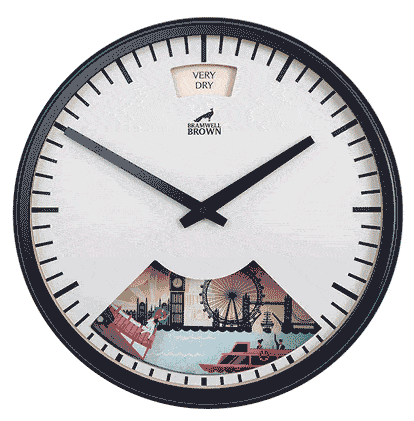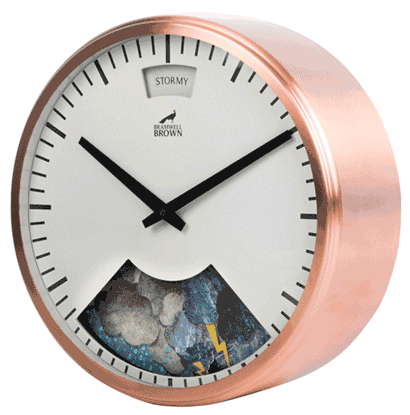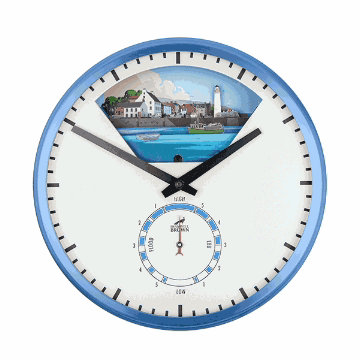The Bramwell Brown Blog
What is a Tide Clock For?
A tide clock shows how soon the high or low tide will be in a coast that is nearby. It can take a bit of knowledge to set up, but once it’s ready, a reliable tide indicator will show you when is the best time to surf, have a shoreline walk, or take a boat out for an exciting day.
Tide Clocks vs Charts and Tables
Most people who want to keep track of the tide can use a tide clock. The traditional method of predicting when high or low tide will be is to use a tide chart or table for your region of the world. A tide table shows what times to expect the water to ebb or flow, and how strong the tide will be.
These tables often contain additional information about specific areas and patterns that are noticeable throughout the month or year. Tables can be incredibly helpful and are necessary tools in setting your own tide clock. Tide charts go into more depth with map information and water levels during the day in specific areas.
Tide clocks take 12 hours, 25 minutes and 14 seconds to make a full revolution from high tide to the next high tide. This is important to note because the amount of time is the average time from data of years of tide comings and goings. While it is usually accurate, the tides can vary occasionally and differ from what tide clocks, tables and charts say. The Moon’s influence on the tide is very regular, but other factors that also influence the tide to a lesser degree are not always as consistent.
Tides in Different Geographical Areas
There are some places where a tide clock won’t run accurately because the tides are not as regular as most areas. Southampton is home to a famous double tide and a stalled progression to the first high tide, known as the Young Flood Stand. There is a complex interplay of factors that leads to Southampton’s strange tidal activity.
The English Channel acts kind of like a rectangular prism filled with water, and when it tips to one end (which is really the tidal pull from the Moon), one side will have a higher depth at one end and a lower depth at the other end, while the mid-point of the channel stays relatively consistent. Known as oscillation, this effect happens twice a day; however, the English Channel is not perfectly smooth on the bottom and the rocks, debris and variable depths create more oscillations throughout the day, which impacts the tidal pattern near Southampton. These factors work in harmony to create the double high tide that throws off a tide clock. See specific commentary on the tide in the Solent area of the English Channel here.
The Young Flood Stand starts a few hours after low tide when the water begins to rise again for high tide. This phenomenon causes the tide to rise slower than normal for two hours before resuming its initial progress to high tide. Though it’s not incredibly noticeable, it is documented in the tide gauge records and it is more pronounced during the Spring.
Who Uses a Tide Clock?
The short answer is anyone who wants to keep track of the tides.
It’s a great addition to a surfer’s household so that they can know at a glance whether or not it’s a good time to go out for a surf session. Consulting tide charts can be time-consuming and requires focus, whereas a tide clock doesn’t pull you out of your current activity for you to know that it’s only a half hour before the tide is in.
Keeping an eye on a local port can be made easier with a tide clock as well. If you’re taking your boat or vessel out, it’s best to have knowledge of when the tide will be going out. Beaching a boat requires you to know when low tide is and how quickly it will come in because you might need to adjust it over time. The last thing you’d want is to have to catch a boat that has gotten loose because the tide came in and caught you unawares. Docking your boat also requires knowledge of the tides so that you can get your boat settled in smoothly. Take into account the direction of the tide and the wind so that you can figure out what your approach will be into port.
Fishermen use tide data to optimize catches and go where the fish are. Certain species like to thrive in deeper areas, and when the tide comes in, it can create a perfect environment for fishermen to make better catches. Some species prefer shallow waters, so when the tide recedes, that can be an ideal time for fishermen as well. Knowing the tide and which way it will turn is a key component in fishing, either recreationally or commercially.
Those who live close to a port or shoreline can find uses for a tide clock as well. In addition to being a wonderful decor item, the tide clock can help you plan those shore walks so that you’re not getting chased away from water as the tide comes in. Enjoying a relaxing walk or swim is easier with planning, and can be gauged right with just a tide clock.
Excited for a New Tide Clock?
If you’re considering a tide clock, check to make sure that the tides in your area follow a regular cycle, with a high tide every 12 hours and 25 minutes or so. Tide clocks do work like timekeeping clocks, and they can’t self-adjust for all the factors that influence tides like the ones around Southampton. Take a look at a tide chart for your area, or search for tide data in your area to know whether or not you have a regular tide that works with a tide clock.
Once you have this information, start shopping for a new tide clock. Consider Bramwell Brown’s dual Tide Clock that features delightful moving shoreline images that predict the tide, as well as a handy tide clock set in the middle of the minimal and classic timekeeping face. A tide clock can be a talking point for your decor and if you pick something made well, you can pass it on in decades’ time.







